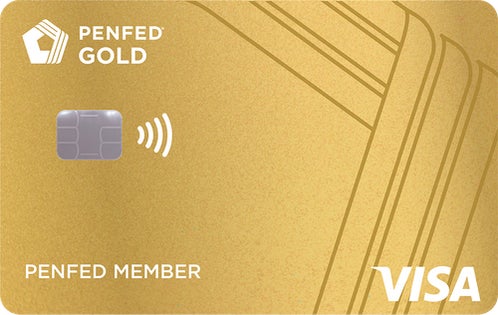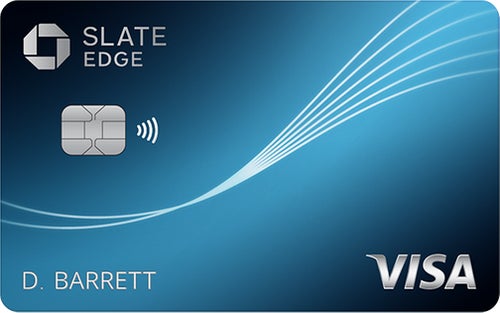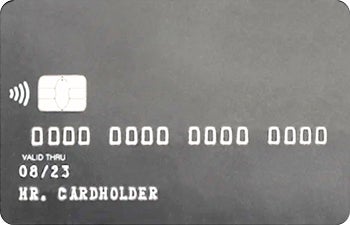At a glance
The Gold Visa® Card could help eliminate existing credit card debt, but there are other options that provide a longer introductory period. If you don’t need to use a balance transfer or want more time to pay down a transferred balance, consider a different card.

Gold Visa® Card
- Intro Offer
-
No current offer
- Annual fee
- $0
- APR
- 17.99% Variable APR
- Recommended Credit A credit score is used to indicate an applicant’s credit worthiness and may provide guidance about account eligibility. It does not necessarily guarantee approval for any financial product.
-
670 – 850
Good – Excellent
- Rewards rate
-
N/A This card doesn’t offer cash back, miles, or points
Our take
If you’re staring at a mountain of credit card debt, trying to get that balance to zero can feel impossible. The PenFed Gold Visa Card could make it easier to manage, thanks to its introductory balance transfer APR offer. There is a 3% balance transfer fee, but that’s in line with the industry standard.
And while the introductory offer also applies to new purchases, this card doesn’t earn rewards, so it really only makes sense to use if you’re transferring a balance. But there are credit cards with longer balance transfer periods you should consider first.
This card could also be helpful if you’re building your credit and don’t want to be tempted by rewards. We also like that this card has a below-average APR of 17.99% variable for purchases, while other credit card APRs tick above the 20% mark.
Pros
Introductory APR offer for purchases and balance transfers
Low balance transfer fee
Lower APR
No annual fee
No foreign transaction fee
Cons
Short offer period compared with competitors
No rewards
Few additional card perks
Introductory APR and balance transfer offer
The Gold Visa’s 0% introductory APR covers both purchases and balance transfers for the first 15 months after account opening (then 17.99% variable APR for purchases, and a 17.99% nonvariable rate for balance transfers)*. For balance transfers, you can score the 0% introductory offer, but you have to make the transfer within the first 90 days. Otherwise, you’ll miss the window and get stuck with a 17.99% APR.
It’s a good offer, but it isn’t long enough to catapult the PenFed Gold Visa into the conversation about the best balance transfer credit cards or even best 0% APR cards for new purchases.
For example, the Citi Double Cash® Card offers a longer introductory period for balance transfers and unlimited 2% cash back on your new purchases (1% cash back when you buy, plus an additional 1% as you pay for those purchases). And if you think you’ll need a bit longer to make the most of a balance transfer, the Wells Fargo Reflect® Card comes with a 0% introductory APR on purchases and qualifying balance transfers for 21 months from account opening (then 18.24%, 24.74%, or 29.99% variable APR). Balance transfers must be made within 120 days from account opening to qualify for the introductory rate. There is a balance transfer fee of 5% ($5 min) that will apply.
*PenFed Gold- There’s a 0% Introductory APR on purchases made the first 15 months after account opening. After that, the APR for any unpaid purchase balance and any new purchases will be 17.99% based on your creditworthiness and will vary with the market based on the prime rate. There’s a 0% introductory APR for 15 months on balance transfers made in the first 90 days after account opening. After that, the APR for the unpaid balance and any new balance transfers will be a non-variable rate of 17.99%. A 3% balance transfer fee applies to each transfer. This transaction is subject to credit approval. If you take advantage of this balance transfer, you will immediately be charged interest on all purchases made with your credit card unless you pay the entire account balance, including balance transfers, in full each month by the payment due date.
Other features
There aren’t many other perks worth noting with the PenFed Gold Visa. It’s a Visa Traditional card, which doesn’t include some of the extra travel benefits of a Visa Signature. However, the APR is significantly lower than most credit cards on the market right now, but we recommend paying your balance in full every month, so your APR won’t actually impact you.
Alternative cards
Chase Slate Edge℠
With an 18-month 0% introductory APR offer on purchases and balance transfers (then 20.49% to 29.24% variable), the Chase Slate Edge* offers three additional months to reduce your debt. However, you need to make sure that you transfer that balance as soon as you open the card to avoid a potentially higher transfer fee.
After 60 days following account opening, the 3% intro balance transfer fee ($5 minimum) jumps to 5% ($5 minimum). While the card’s variable APR is higher than the PenFed Visa Gold, the structure of the Chase card encourages responsible ongoing credit behavior: You can reduce your APR by 2% each year if you make on-time payments and spend at least $1,000 each year (until your APR reaches the prime rate plus 9.74%).
However, if you have any plans to be outside the US, the PenFed Gold is a better pick. With all PenFed cards, you won’t have to worry about foreign transaction fees. The Chase Slate Edge, however, charges 3% for purchases outside the US.
You can learn more in our Chase Slate Edge review.
Discover it® Cash Back
The Discover it® Cash Back* 15-month 0% introductory APR offer on purchases and balance transfers (then 17.24% to 28.24% variable) is identical to the PenFed Gold Visa. Over the long haul, though, the Discover it Cash Back is much better to keep in your wallet, thanks to quarterly rotating 5% cash back when you activate on up to $1,500 of spending in certain categories each quarter (then 1%) and 1% cash back on all other purchases.
If you opt to use the Discover it Cash Back card to transfer a balance, you may miss out on this card’s Cashback Match™ welcome bonus that’s only available in your first year of ownership. However, if you’re transferring a large balance, you shouldn’t be focused on spending more to rack up rewards. No matter which card you choose, you should aim to avoid adding any more debt to your name. Once you shrink the bill to $0 and refine your financial habits, you can think about your credit card rewards strategy.
You can find all the details in our Discover it Cash Back review.
How the Gold Visa® Card compares to other cards
FAQs
When an APR offer ends, any remaining balance will accrue interest at the card’s regular APR. That’s why it’s important to focus on paying off your balance in full by the end of the introductory period.
Most balance transfer offers come with a 3% fee. So, if you transfer a $10,000 balance, you would pay $300. However, some cards charge 5%, which would cost $500 for a $10,000 transfer. Though these fees can add up, they’re generally less expensive than allowing APR to continue accruing on a card balance.
Though an upfront payment of 3% of the transfer amount might sound like adding to your debt, think of that 3% as an investment to buy yourself some time. The cost of the fee will likely be far less than paying continuous interest charges. The larger your current debt load and the higher your current interest rate is, the more valuable a balance transfer becomes.
It depends on how much debt you’re carrying on your existing credit card, the rate you’re currently paying and the amount you can afford to pay each month during a 0% introductory period. For example, if you’re carrying a balance of $10,000 on a credit card with a 20% interest rate, transferring that balance to the PenFed Gold Visa could save you more than $1,971 in interest.
Generally speaking, credit unions tend to offer lower APRs and more affordable fees than big banks. However, you’ll often find better rewards and welcome bonus opportunities at big banks.
*All information about the Discover it Cash Back and Chase Slate Edge has been collected independently by CNET and has not been reviewed by the issuer.
The editorial content on this page is based solely on objective, independent assessments by our writers and is not influenced by advertising or partnerships. It has not been provided or commissioned by any third party. However, we may receive compensation when you click on links to products or services offered by our partners.


